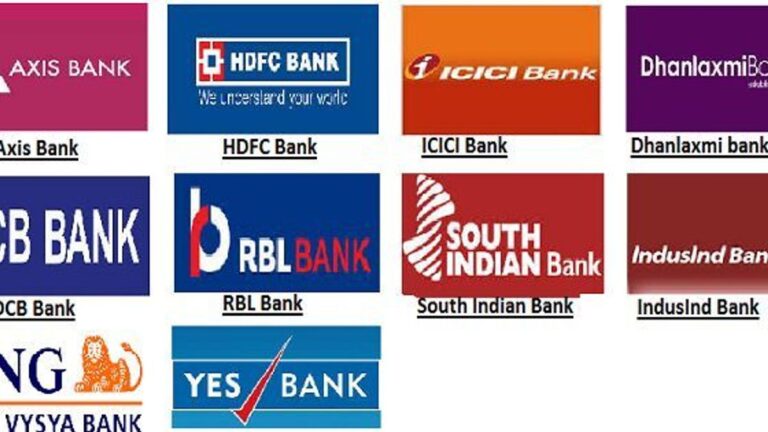Ashish Nambisan: Last week it was suggested that “The chart patterns are turning somewhat bullish from bearish. It seems that the upside resistance of 23850 would be taken sooner than later but Traders should be cautiously bullish and wait for an upside breakout above 23950/24050 or else the best remedy is BUY on dips at or near 23450 with a stop of 23200 remember this level was given last week and it was broadly respected for the entire week. So, markets will remain bullish till we are above 23200. It is too early to say this but as per my suggestion if by any chance we cross 23950 in Nifty 50 successfully and stay above it than an upside target of 24800/24900 cannot be ruled out. Do not forget we have been in a downward correction since last four months.” What happened next? On Monday we opened near 23550 and markets behaved bearish on Trump declaring tariffs on Steel and Aluminium and after taking a drop it took the stop loss of 23200 and again revisited the old support trajectory of 22700 forming a low at 22798 and 22774 respectively, but failed to surrender the support zone of 22700. I had also indicated traders to be cautiously bullish. (Here the million-dollar question should be after steel and aluminium, can copper be the next on his list?) We will discuss that later. So, what should we expect from the market after considering these facts. Is it possible that Nifty 50 surrenders completely and finally we move back into the bear territory? Let’s, first check the facts and look into the global scenario.
US
In US the retail sales dropped to 0.9% in January, it was the biggest in nearly two years suggesting a sharp slowdown in economic growth although across the board decline in retail sales does not reflect a material shift in consumer spending as it also followed four straight months of substantial increases. The Economists continued to expect the Fed would not resume cutting interest rates before second half. The Trump administration policies like broad tariffs on imports, have cast a shadow over the economy. Of course, the retail sales drop was dramatic but several justifying factors show there is no cause of concern. The biggest decrease since March 2023 after an upwardly revised 0.7% increase in December. Economists polled by Reuters had forecast retail sales, which are mostly goods and are not adjusted for inflation, dipping 0.1%. Retail sales increased 4.2% yoy in January. Some economists speculated that rising prices and confusion over tariffs could have impacted sales. Pre-emptive buying in anticipation of tariffs that would raise prices for goods helped to boost retail sales in recent months. But consumer sentiment has deteriorated, with one year inflation expectations hitting a 15-month high in early February as households perceived that “it may not be too late to avoid the negative impact of tariff policy,” a survey by Michigan University showed last week. First time in 9 months the business inventories fell in US as strong domestic demand depleted stocks at retailers and wholesalers. Inventories dropped by 0.2% the first decline since March, after gaining 0.1%in November. A yoy basis of 0.2% increase was seen in December, now this is a bearish scenario for the USD. Inventories are key component of GDP product which remains unchanged and it is the most volatile component of GDP.
UK
Britain entered a rare deficit in its goods trade with the US at the end of last year, according to data published on Thursday. The National Statistic’s said Britain’s goods trade balance with the US showed a deficit of 164 million £ in the fourth quarter, compared with a 713 million £ surplus in the third quarter. Excluding big swings seen during the height of Covid -19 pandemic, it marked the first goods trade deficit with the US since 2011. Britain and US trade hundreds of billions of dollars’ worth of goods and services annually, but London hopes that uncertainties in the data will help to earn an exclusion from Trump’s tariff plans. The trade deficit will likely remain wide in 2025 as rising wholesale energy prices raise import costs and Trump’s tariff threats undermine globe trade said by a senior economist. BOE (Bank of England) chief economist said in an interview with Reuters that higher US import tariffs would not automatically lead to higher inflation but could have quite substantial effects in the longer term.
Germany
Germany’s economy has not exhibited any notable recovery since the start of the year, according to a report from the country’s economy ministry. The report was published on Thursday which highlighted the ongoing struggles of the economy amid domestic and international challenges. The report suggested both domestic and foreign demand remain weak and that there are increased domestic and geopolitical risks at play. The US trade policy was specifically mentioned as a significant concern. The report concluded these factors as have prevented any noticeable economic upturn in Germany. Additionally, the report also indicated that there is no evidence of a turn around in industrial sector. Concerns about job security and ongoing geopolitical uncertainties are continuing to obstruct a recovery in the consumer climate. These are the factors contributing to the continued economic stagnation in Germany.
Japan
Japan’s wholesale inflation jumped to a seven-month high of 4.2% in Jan and accelerated for the 5th straight month, highlighting persistent price pressures and reinforcing market bets of another interest rate hike this year. Japan’s core consumer inflation hit 3.0% in December to mark the fastest annual pace in 16 months and staying above the BOJ’s 2% target for nearly three years.
Copper
Now, let’s come back to my question whether there is really a threat on copper imports to the US. Well, the markets are already pricing in tariffs on copper shipments to the US, despite Trump saying it will take a little longer to implement than those on aluminium and steel. The arbitrage between the CME and the LME contracts have widened, with the CME premium now standing at over $ 1200/t – more than 10% of the LME price. Prices in US are up more than 20% this year, having hit their historic highest level since 2024, while the benchmark LME price is around 10% higher year-to-date. There is a further upside risk for copper prices in New York if tariffs are applied, however the spread risks a pullback if any potential tariffs fall short of expectations. The threat of tariffs has led to expectations of a temporary tightness in US copper market, with traders shifting metal from global LME warehouse to the US to take advantage of the arbitrage. This was seen before under Trump’s first term, CME stocks surged driven by tariff uncertainty which was then followed by a destocking cycle. The US is reliant on around 45% of copper imports for its domestic consumption and Chile is the country’s biggest supplier at 35% followed by Canada at 26%. The US imported around 800,000 tonnes of refined copper in 2024 while its domestic production last year summed up to 850,000 tonnes. Now, if implemented US tariffs on copper, then it may drive a short-term price surge, reflecting front loading of inventories ahead of any tariffs coming into effect; a global trade war would be bearish for copper. Copper often referred to “Doctor Copper” holds a reputation as a barometer for global economic health. Tariffs are bearish for copper and other industrial metals in context of slowing global growth and keeping inflation for longer. China already struggling to revive its economy, demand for copper and other industrial metals is likely to weaken.
Let’s come back to Indian markets. Now Indian Prime Minister Modiji met Mr. Trump, India and US agreed on Thursday to resume talks to settle a deal later this year, with a goal of more than doubling bilateral trade to $ 500 billion this decade. India has promised to buy more US defence, energy and other products. Indian companies are competitive now partly due to government incentives like corporate tax cuts and manufacturer’s own initiatives to step up quality and widen their global distribution. The exports to the US could go up if there is a bilateral deal. Let’s understand the technical’s last week it was suggested to go long on dips near 23450 but we lost to see any upside momentum due to the tariffs on steel and aluminium which triggered the stop of 23200 but we still managed to hold the significant support of 22700 while ended to settle below the psychological mark of 23000. Nifty 50 chart has yet not surrendered below our major support of 22700 which I have been talking since weeks. So now what should we sum up to looking at the overall sceptical scenario as well as the charts I would give the bulls a benefit of doubt.
Conclusion: Considering the chart of Nifty 50 three factors should be kept in mind avoiding the rest like tariffs, retail sales, inflation etc. (1) 22700 is not breached yet, so it’s a bit early to be bearish at this point of closing, as we are very close to 22700. (2) Positive divergences were seen near the support zone last week which helped Nifty 50 with a bounce till 23800 on Feb 5, 2025. (3) A triple bottom has been furnished this week near the support of 22700 which is a strong bullish pattern in itself. In nutshell I would say although we have breached the supports of 23200 and are in fact trading below 23000 all said and done but one should not overlook the above mentioned three factors and I would give it a benefit of doubt to bulls unless we do not surrender 22700 on closing basis. Aggressive bulls should bet longs with a strict stop of 22650 while others should wait till a close above 23250. However, bears can short near the rise of 23250 with a stop of 23600. Unless we do not close above the mark of 23850 Nifty 50 will not enter a bullish trajectory, which had been suggested even last week with a say that sooner or later this level would be taken and a possible upside will be seen but we failed to do so, but my hopes are still active as we haven’t breached the important mark of 22700 and neither have, we crossed 23850 to be a bullish trader. Till 22700 is not breached on the downside I would avoid shorts as of now, as that can be played either below 22700 close or near 23250 so its better to avoid the play only aggressive trader bets are possible as of now.


